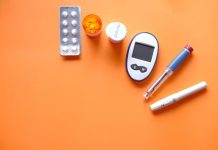Diabetics can incorporate these enjoyable foods and body enhancing mechanisms to normalize blood glucose.
One out of 10 Americans has diabetes. Maintaining normalized blood sugar levels is uppermost in the minds of diabetics. Adding in these fun ways to enjoy life and to help maintain good glucose levels can become great tools toward better health. A profound positive impact on diabetic medication requirements can be the reward of following these easy to implement suggestions. Try them out.
Table of Contents
Dance in Front of the TV
Too rainy, cold, or hot to walk? Try dancing in front of the TV for 20 or 30 minutes. Or take a half-hour walk several times a week. Take the dog out for a walk if you have one.
Exercise helps to regulate blood sugar numbers and de-stress the body. Drink plenty of water to rehydrate throughout the day. Eight glasses are recommended. Water helps flush impurities out of the system. Doctors recommend exercise be included as a part of your routine five days a week, right along with taking the medications and being aware of what you eat. Discover what enjoyable exercise can do.
Enjoy Soy and a Glass of Red Wine
Have a glass of red wine with your main meal. Researchers have shown that both red wine and whole soy foods help to prevent blood sugar spikes immediately following meals. Soy fiber has been shown to normalize blood sugar levels for hours following meals in type II diabetics.
Snacking on soy nuts or other whole soy snack bars are a good way to get slow digesting protein into the system. Seek out quality protein, which has all of the essential amino acids in a non-animal form that stays in the body for hours and helps to modulate blood sugar highs and lows.
Vegetarian forms of protein from soy foods are easier on the kidneys and therefore better for persons with diabetes. A university study showed that consuming whole soy foods (not pills or supplements) on a regular basis helps prevent kidney disease and improve cholesterol profiles.
Diabetic-Friendly Meat Style Meals
Whole soy foods are also good for the heart and kidneys and have been shown to be a fine substitute for meat , so these are more good reasons to commit to adding these products to your daily diet.
There are inexpensive ground-beef style analogs made from whole soy meat replacers that can be added to spaghetti sauce and used to make meat loafs, tacos, sloppy joes and other meals faster and more inexpensively.
Soy nuts and an economical whole soy cereal have long been recommended by health practitioners. These gluten-free, shelf-stable foods are not readily available in stores, but are easily found on the web from many diet and fitness food distributors. Keep them in the pantry for easy access. They should be a mainstay.
Avoid Simple Sugars but Still Eat Dessert
Life is sweet. Utilize low carb diet foods wherever possible, especially for desserts and sweet snack foods. These foods are specially formulated to eliminate nutrition-less and simple sugars and refined carbohydrates.
They are delicious and are usually good sources of fiber and protein. By keeping these foods on hand, those sweet cravings can be satisfied in a good way, without spiking the levels of blood sugar. The pantry stable foods and mixes, like muffins, brownies, cakes, cookies and breads are easily available on the internet. Freeze them to have on hand for easy eating.
Dietary Changes can Make a Big Difference
It is good to know that a published study did conclude that 56 percent of type 2 diabetics who ate a Mediterranean-style diet (a diet that consists of fruits, vegetables, olive oil, fish and less meat consumption along with moderate wine intake plus non-refined grains), actually controlled their blood sugar without medication. Small changes can add up big toward normalizing blood sugar, like replacing regularly eaten poor foods with healthy yet also pleasurable ones. These important choices are made to enjoy life with, in order to look forward to that next A1C blood glucose test.
Sources:
James W. Anderson, et al., “Meta-Analysis of the Effects of Soy Protein Intake on Serum Lipids,” New England Journal of Medicine, 333; 276-282, 1995



